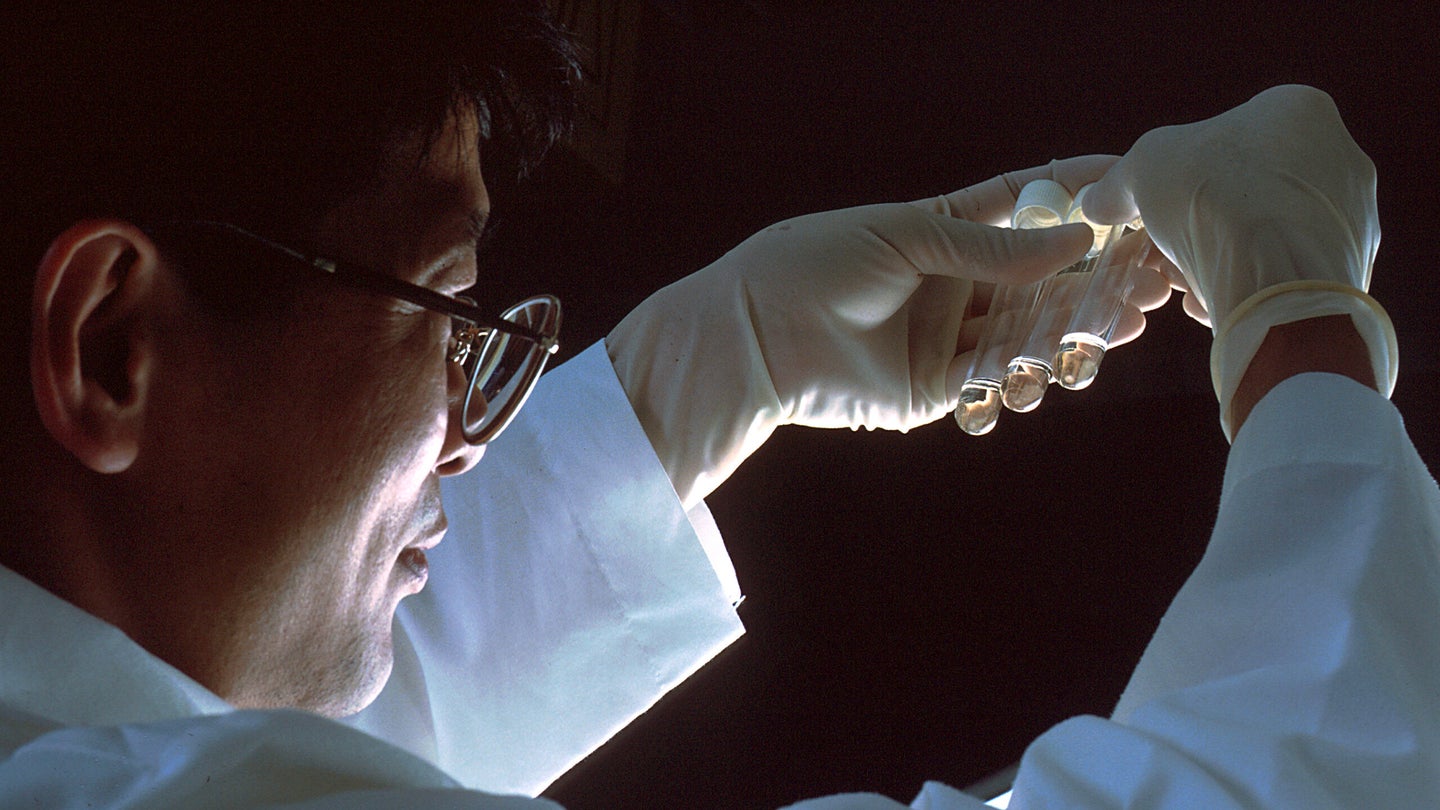
Snapping your fingers is a move worthy of a professional athlete
Your fingers are more powerful than a baseball pitcher’s arm.
- Science
 A snap takes only seven milliseconds. But it's a power move. Krakenimages.com/Deposit Photos SHARE
A snap takes only seven milliseconds. But it's a power move. Krakenimages.com/Deposit Photos SHARE If you’ve seen any of the Avengers movies, they might have inspired some science questions like: Could Iron Man’s suit ever exist? Is time travel real? Why doesn’t Bruce Banner have stretch marks everywhere? For one group of physicists, it provoked the question: What’s the physics of a finger snap? The query arose precisely when the villain Thanos snaps his fingers while wearing the powerful Infinity Gauntlet in Avengers: Infinity War (2018). Could a person actually snap successfully while wearing heavy duty equipment like the Infinity Gauntlet?
var siteRootDomainParts = window.location.host.split("."); var siteRootDomain = window.location.host; if ( siteRootDomainParts.length >= 2 ) { siteRootDomain = siteRootDomainParts[siteRootDomainParts.length - 2] + "." + siteRootDomainParts[siteRootDomainParts.length - 1]; } cnxps.cmd.push(function () { cnxps({ playerId: "d0aa10a3-c0c5-48e8-865e-f5d73ae74404", customParam1: window.empire.apps.ads.targeting.pageId + "", customParam2: window.empire.apps.ads.targeting.section + "", customParam3: window.empire.apps.ads.targeting.keywords + "", settings: { advertising: { macros: { cust_params: "site=" + siteRootDomain + "&targeting_article=" + window.empire.apps.ads.targeting.externalId + "&targeting_section=" + window.empire.apps.ads.targeting.section + "&targeting_keyword=" + window.empire.apps.ads.targeting.keywords + "&article=" + window.empire.apps.ads.targeting.pageId, article: window.empire.apps.ads.targeting.pageId, category: window.empire.apps.ads.targeting.section, keywords: window.empire.apps.ads.targeting.keywords, } } } }).render("404a5343b1434e25bf26b4e6356298bc"); });The curious physicists, all at Georgia Tech’s School of Chemical and Biomolecular Engineering and Harvey Mudd College, published their findings Tuesday in the Journal of the Royal Society Interface, and in doing so illuminated just how powerful a fingersnap is, even without the Infinity Gauntlet. In fact, the researchers found, this motion produces the highest rotational acceleration ever observed in humans, nearly three times faster than a Major League Baseball pitcher’s arm. And the star of the show enabling this high rotational acceleration? Friction.
“You get the data like, ‘Oh, we’re hitting 1.6 million degrees per second squared, holy smokes. This is actually a pretty darn fast moment,” says Saad Bhamla, a professor at Georgia Tech who oversaw this study. “We need to investigate how it is that we are able to generate such high extreme acceleration.”
Rotational acceleration looks not just at the speed with which something moves, but also the arc it travels on. For example, a pitcher’s arm makes an arc, and the rotational acceleration looks at the angle made by the start and end point of that arc. Snapping may seem like no big deal, but it’s impressively fast. A snap takes only seven milliseconds, compared to the blink of an eye at a leisurely 150 milliseconds. Its rotational acceleration hit 1.6 million degrees per second squared, meaning the small arc the middle finger creates on its quick journey covers 1.6 million degrees of an angle each second.
The whole action, from drawing the thumb and middle finger together to when the fingers have gone lax post-snap, turns the hand into a physical system, as the team’s paper explains. That means that all the parts of the hand that go into producing the snap operate independently but function together, like parts of a machine. Your hand becomes a latch mediated spring actuated (LaSMA) system. These systems can produce enormous energy on a very small scale: A motor loads potential energy into a spring system that’s kept in place with a latch. When the latch releases, potential energy stored between the spring and the latch converts to kinetic energy in an explosive, ultrafast motion. Other creatures, like mantis shrimp and trap jaw ants, also possess LaSMA systems that allow them to make snapping motions. As powerful as our snaps are, we pale in comparison to theirs.
The team mapped the LaSMA system onto the snapping hand. The arm muscles served as a motor, funneling potential energy into the finger tendons, which became springs. The latch isn’t the solo thumb or middle finger, but rather the skin friction between your middle fingertip and thumb tip. This friction plays a dual role in the dynamics of the snap, creating a latch while hindering unlatching. If you hold your thumb and middle finger together in that pre-snap position, you can feel the potential energy squeezing from your wrist and knuckles as your fingertips hold taut.
[Related: What the heck is a time crystal, and why are physicists obsessed with them?]
By moving the thumb and middle finger in opposite directions with enough effort, you’ve overcome the skin friction temporarily latching your fingers together, and all that potential energy stored in the finger tendons bursts out as kinetic energy. The middle finger propels to the bottom of your palm, where upon impact it creates the snap. Just like that.
Bhamla’s team explored the variables within this system, like friction and compressibility between the fingertips. They tried snapping their fingers with hand lotion-slick fingertips, and while wearing inhibitors like latex gloves and metal thimbles (the closest Earthly analog to the fingertips of the Infinity Gauntlet).
“We need this Goldilocks zone, because too little friction, you can’t load up enough energy,” says Bhamla. “But if you have too high friction, you still have to have this dynamic motion of sliding past each other.”
While this was a pet project for the team, their observations are at the intersection of physics and engineering. For instance, have you ever tried to unlock a smartphone with a wet fingertip? Looking into the role friction plays could also influence materials science and the things we hold every day.
“Fingers snapping is a really high, fast motion and extreme case, which allows us to peer into the limits of these finger pads,” says Bhamla.
If you still haven’t figured out how to snap, there’s not much Bhamla can do to help. When asked for the formula for how to perfect a snap, he answered with his own question. “Why is it that we can snap? Like, what is the biological function evolutionary?” It remains to be seen whether other creatures with opposable-thumbs can snap, but that might be the next piece of the puzzle.
avengers friction motion physics Science MORE TO READIntroducing Jobbguru: Your Gateway to Career Success
The ultimate job platform is designed to connect job seekers with their dream career opportunities. Whether you're a recent graduate, a seasoned professional, or someone seeking a career change, Jobbguru provides you with the tools and resources to navigate the job market with ease.
Take the next step in your career with Jobbguru:
Don't let the perfect job opportunity pass you by. Join Jobbguru today and unlock a world of career possibilities. Start your journey towards professional success and discover your dream job with Jobbguru.
Originally posted on: https://www.popsci.com/science/finger-snapping-physics/


